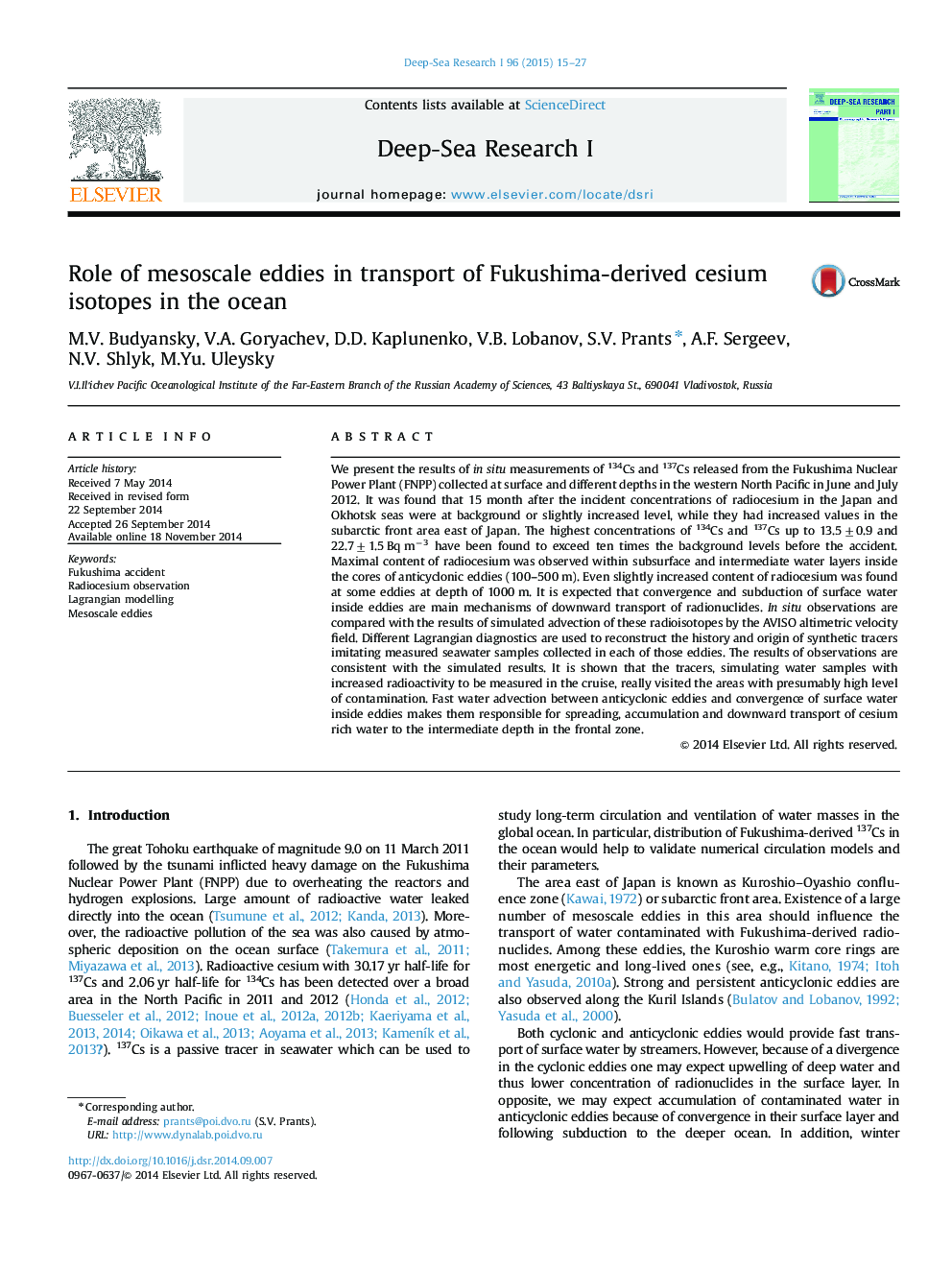| کد مقاله | کد نشریه | سال انتشار | مقاله انگلیسی | نسخه تمام متن |
|---|---|---|---|---|
| 6383588 | 1626334 | 2015 | 13 صفحه PDF | دانلود رایگان |
- Fukushima-derived cesium-isotopes have been detected in the centers of anticyclonic eddies in the western North Pacific.
- Maximal concentrations have been observed in the subsurface and intermediate waters as a result of subduction at the eddies.
- The observations have been found to be consistent with simulation based on AVISO velocity field.
- Lagrangian diagnostics were used to reconstruct origin of tracers imitating seawater samples collected in the eddy cores.
We present the results of in situ measurements of 134Cs and 137Cs released from the Fukushima Nuclear Power Plant (FNPP) collected at surface and different depths in the western North Pacific in June and July 2012. It was found that 15 month after the incident concentrations of radiocesium in the Japan and Okhotsk seas were at background or slightly increased level, while they had increased values in the subarctic front area east of Japan. The highest concentrations of 134Cs and 137Cs up to 13.5±0.9 and 22.7±1.5 Bq mâ3 have been found to exceed ten times the background levels before the accident. Maximal content of radiocesium was observed within subsurface and intermediate water layers inside the cores of anticyclonic eddies (100-500 m). Even slightly increased content of radiocesium was found at some eddies at depth of 1000 m. It is expected that convergence and subduction of surface water inside eddies are main mechanisms of downward transport of radionuclides. In situ observations are compared with the results of simulated advection of these radioisotopes by the AVISO altimetric velocity field. Different Lagrangian diagnostics are used to reconstruct the history and origin of synthetic tracers imitating measured seawater samples collected in each of those eddies. The results of observations are consistent with the simulated results. It is shown that the tracers, simulating water samples with increased radioactivity to be measured in the cruise, really visited the areas with presumably high level of contamination. Fast water advection between anticyclonic eddies and convergence of surface water inside eddies makes them responsible for spreading, accumulation and downward transport of cesium rich water to the intermediate depth in the frontal zone.
Journal: Deep Sea Research Part I: Oceanographic Research Papers - Volume 96, February 2015, Pages 15-27
